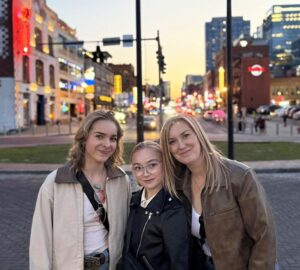Within a month since it began, the latest FireSmart project in the forest behind the new St. Joseph’s School is already well into its treating process. “They’ve probably treated about 25% of the area. They are well into it now. They have the mulchers working and they are making a couple of fire lanes for us through the forest” explained Whitecourt Fire Chief Brian Wynn.
The contractor that is handling the project is Wide Open Slashing Ltd and they expect to be in the area for several more weeks as they clear the forest area from dead and downed trees, and low-lying branches. They are working right up to the edge of the Pembina Pipeline which will act as a natural fire barrier. “If we can get that mowed then that is probably a 20-meter wide berth of land between the treated forest and the wildland forest. This will give us a safe area to work in.”
Safety is a big reason for the FireSmart program as it makes the forest accessible. “If I can’t walk through a forest, how can I send a firefighter in there to work? I won’t do it because I probably won’t get them back. We’re not going to endanger the lives of our firefighters for a forest fire.”
In previous fire seasons, specifically the last two years, conditions were hazardous for a substantial portion of the province which meant that fires popping up in other communities had Whitecourt crews on standby. “If we have our area around town pre-treated, that gives me a comfort level that I know that we’ve already done preventative stuff that’s going to help us. It’s not a situation where, the fire is coming let’s do it now. This is done.”
Residents don’t have to worry about losing a large part of the beautiful forests that surround Whitecourt as the percentage of trees being removed is very low. “Only 2% of the trees are being removed. That’s just really for the machine to be able to get through and work where it is. All the live trees are still green; there still alive. We might space them out a little bit, if the conifers need to be spaced but if there’s aspens or tamaracks, we don’t even touch them because they are not a high-risk fire tree.”
The project will remove about 30% of the fuel in the forest which is a huge reduction. It will look just like the treatment in Centennial Park which left behind a healthy forest and simply sped up the natural Mother Nature process for the decay. “All we did was chew up the dead and downed stuff, we mulched it and landscaped it a little bit. We’re removing fuel.”
To see the process more in-depth, visit the Press Facebook page to see a video of Fire Chief Bryan Wynn explaining the difference between treated and non-treated forests.







More Stories
Birthday party chaos sung beautifully by Pumpjack Players’ youth in spring musical
Gearing up for another season of cars, cruising and camaraderie
Big dreams lead a talented local youth to Nashville